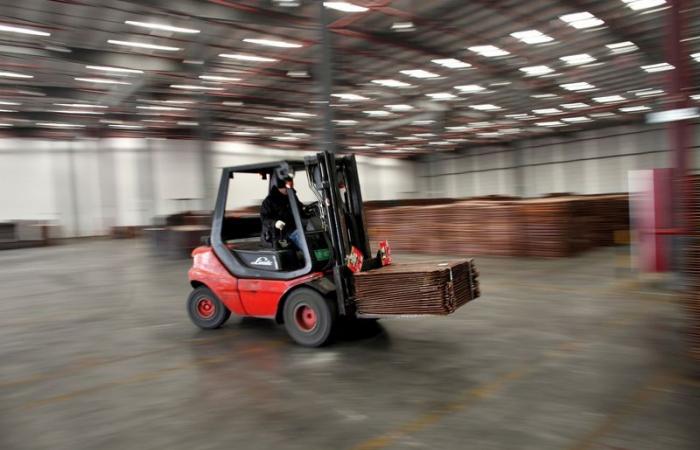Chinese imports of copper scrap have soared due to shortages of concentrates that are turned into the refined metal used in the energy and construction sectors, but record prices mean U.S. shipments will likely grind to a halt.
Chinese smelters, large consumers of copper, have faced concentrate shortages since last year, when First Quantum lost the right to operate its Cobre mine in Panama, which represented 1% of global supply in 2022 .
According to Trade Data Monitor (TDM), China’s imports of copper scrap and scrap increased by 25% to 783,004 tonnes in the first four months of this year compared to the same period in 2023.
TDM data also shows that China’s imports of scrap metal from the United States jumped 37% to 153,059 tonnes between January and April this year, compared to the same period last year.
Scrap copper from the United States is being sold at a lower price than the CME, which hit a record high of $5.1985 per pound or $11,460 per ton on May 20, as parties that had sold scrap futures contracts were forced to buy them back or roll over their positions.
“Chinese buyers are postponing deliveries of U.S. copper scrap,” said a source at a Chinese trading company, adding that the United States was China’s main scrap supplier.
The source said some Chinese buyers were seeking to price U.S. scrap against that of copper on the London Metal Exchange (LME), which trades at a lower price than the CME.
Deteriorating production at other mines, often in Latin America, has exacerbated concentrate shortages and Chinese smelters have imported more copper scrap to fuel their furnaces and protect margins.
China is home to half of the world’s copper smelters and is the largest buyer of raw materials, including concentrates and scrap.
Scrap metal represents around 9 million tonnes, or roughly 30% of the world’s copper supply each year.
“Due to the concentrate shortage, copper smelters are processing more scrap and blister,” said Macquarie analyst Alice Fox.
“Taking into account the cost of physical collection and processing – during periods of significant price fluctuations, scrap tonnages on a contained copper basis can vary by up to a million tonnes per year, effectively rebalancing the market for periods of high or low prices.
Macquarie expects the gap between copper supply and demand to widen to 1.6 million tonnes in 2030, compared to a shortfall of around 86,000 tonnes this year. (Reporting by Pratima Desai; Editing by Ros Russell)






